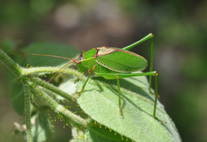Abstract
A thin fiber-less sponge from Caribbean reefs (Bocas del Toro, Panama) with close genetic affinities (based on 18S and 28S nuclear ribosomal RNA gene sequences) to large fan-shaped fiber-bearing sponges (Ianthella and Anomoianthella) from the Indo-Pacific Ocean is here presented. We describe its overall external morphology, histological features, and ultrastructure. Its genetic distance from the only previously known fiber-less verongid genus, Hexadella, prompted the need to erect a new genus to classify this species. This novel species constitutes the first record for a member of the family Ianthellidae in the Caribbean. The characterization of the family Ianthellidae (sensu Cook and Bergquist, 2000) is here modified by: i) highlighting the cavernous nature of the choanosome, with many lacunae and channels reported for all genera included in the family; ii) extending the family distribution to the Caribbean; and iii) adding a fourth genus to the group of verongids with eurypylous chambers. The possession of a cellularized cortex (10–300 µm in thickness) is here proposed as a potential synapomorphic character of the Ianthella–Anomoianthella–Vansoestia clade. The main issues regarding the suprageneric classification of verongids are discussed.

